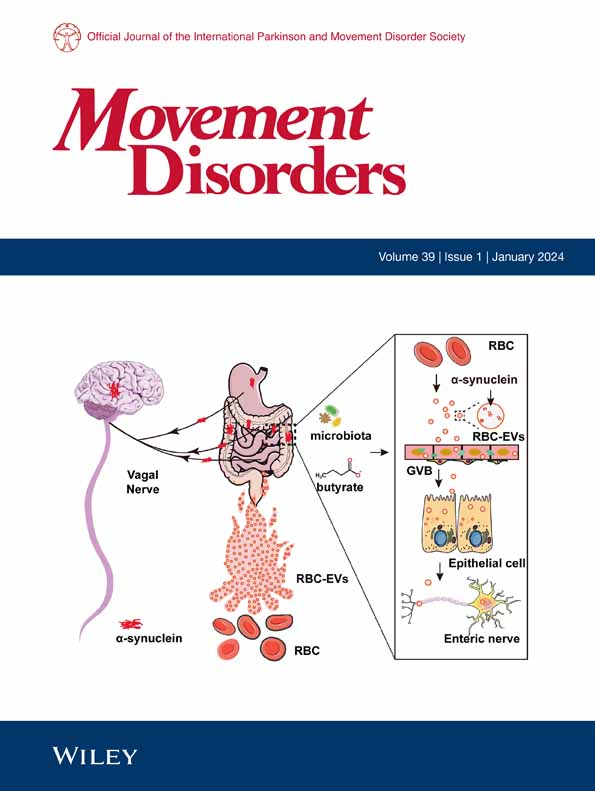求助PDF
{"title":"Small Particles, Big Potential: Polymeric Nanoparticles for Drug Delivery in Parkinson's Disease","authors":"Sasivimol Virameteekul MD, MSc, Andrew J. Lees MD, FRCP, FMedSci, Roongroj Bhidayasiri MD, FRCP","doi":"10.1002/mds.29939","DOIUrl":null,"url":null,"abstract":"<p>Despite the availability of a number of efficacious treatments for Parkinson's disease, their limitations and drawbacks, particularly related to low brain bioavailability and associated side effects, emphasize the need for alternative and more effective therapeutic approaches. Nanomedicine, the application of nanotechnology in medicine, has received considerable interest in recent years as a method of effectively delivering potentially therapeutic molecules to the brain. In particular, polymeric nanoparticles, constructed from biodegradable polymer, have shown great promise in enhancing therapeutic efficacy, reducing toxicity, and ensuring targeted delivery. However, their clinical translation remains a considerable challenge. This article reviews recent in vitro and in vivo studies using polymeric nanoparticles as drug and gene delivery systems for Parkinson's disease with their challenges and future directions. We are also particularly interested in the technical properties, mechanism, drugs release patterns, and delivery strategies to overcome the blood–brain barrier. © 2024 International Parkinson and Movement Disorder Society.</p>","PeriodicalId":213,"journal":{"name":"Movement Disorders","volume":"39 11","pages":"1922-1937"},"PeriodicalIF":7.4000,"publicationDate":"2024-07-30","publicationTypes":"Journal Article","fieldsOfStudy":null,"isOpenAccess":false,"openAccessPdf":"","citationCount":"0","resultStr":null,"platform":"Semanticscholar","paperid":null,"PeriodicalName":"Movement Disorders","FirstCategoryId":"3","ListUrlMain":"https://onlinelibrary.wiley.com/doi/10.1002/mds.29939","RegionNum":1,"RegionCategory":"医学","ArticlePicture":[],"TitleCN":null,"AbstractTextCN":null,"PMCID":null,"EPubDate":"","PubModel":"","JCR":"Q1","JCRName":"CLINICAL NEUROLOGY","Score":null,"Total":0}
引用次数: 0
引用
批量引用
Abstract
Despite the availability of a number of efficacious treatments for Parkinson's disease, their limitations and drawbacks, particularly related to low brain bioavailability and associated side effects, emphasize the need for alternative and more effective therapeutic approaches. Nanomedicine, the application of nanotechnology in medicine, has received considerable interest in recent years as a method of effectively delivering potentially therapeutic molecules to the brain. In particular, polymeric nanoparticles, constructed from biodegradable polymer, have shown great promise in enhancing therapeutic efficacy, reducing toxicity, and ensuring targeted delivery. However, their clinical translation remains a considerable challenge. This article reviews recent in vitro and in vivo studies using polymeric nanoparticles as drug and gene delivery systems for Parkinson's disease with their challenges and future directions. We are also particularly interested in the technical properties, mechanism, drugs release patterns, and delivery strategies to overcome the blood–brain barrier. © 2024 International Parkinson and Movement Disorder Society.
小颗粒,大潜力:用于帕金森病药物传输的聚合物纳米粒子。
尽管目前已有许多治疗帕金森病的有效方法,但这些方法的局限性和缺点,特别是与大脑生物利用率低和相关副作用有关的局限性和缺点,强调了对更有效的替代治疗方法的需求。纳米医学是纳米技术在医学中的应用,近年来作为一种有效地向大脑输送潜在治疗分子的方法受到了广泛关注。特别是由生物可降解聚合物制成的聚合物纳米粒子,在提高疗效、降低毒性和确保靶向递送方面显示出巨大的前景。然而,将其应用于临床仍然是一个相当大的挑战。本文回顾了最近将聚合物纳米粒子作为药物和基因递送系统用于帕金森病治疗的体外和体内研究及其面临的挑战和未来发展方向。我们还对克服血脑屏障的技术特性、机制、药物释放模式和递送策略特别感兴趣。© 2024 国际帕金森和运动障碍学会。
本文章由计算机程序翻译,如有差异,请以英文原文为准。


